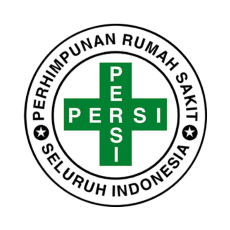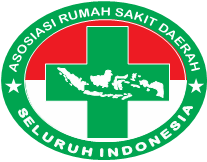Abstract
The main source of hospital income came from inpatients delivery care of Jamkesda. Jamkesda integration into BPJS health will change it’s payment system to provider from retrospective to prospective. This study aims to describe the potential difference of hospital tariff based on Perda and INA-CBGs. In addition hospital strategies to coping with potential difference of hospital is also observed. This study is an operational research collecting quantitative and qualitative data, using 660 claims and medical records of inpatient delivery care of Jamkesda year 2013. The results showed that the largest claim components for spontaneous delivery and delivery with (forceps, vacuum extraction, induction) are facilities/accommodation, medical and nursing fee. While the largest claim components for delivery with secarian are medical fee, consumables and facilities/accommodation. Spontaneous delivery showed a positive difference for all cases, while delivery with (forceps, vacuum extraction, induction) showed overall positive difference, but the difference between all cases varied. The largest difference found in secarian delivery with secarian is in the average of Rp.3.373.669/patient. It takes strategy through medical staff, nurses and pharmacy staff management with performance-based remuneration system, monitoring by clinical pathways to reduce length of stay and control of cost variations in delivery care, hospital formulary and standard of consumables, the use of hospital management information system for evaluation of hospital efficiency and addition of coders, costing for tariff, services and market identification to obtain subsidize potention and development of hospital services.
Bahasa Abstract
Sumber penerimaan terbesar rumah sakit adalah pasien rawat inap persalinan Jamkesda. Integrasi Jamkesda dengan BPJS Kesehatan akan merubah sistem pembayaran dari retrospektif menjadi prospektif. Penelitian ini bertujuan untuk menggambarkan potensi selisih penerimaan rumah sakit berdasarkan tarif Perda dan INA-CBGs serta strategi menghadapi potensi selisih tersebut. Penelitian ini merupakan penelitian operasional dengan mengumpulkan data kuantitatif dan kualitatif, menggunakan 660 tagihan dan berkas rekam medis pasien persalinan Jamkesda tahun 2013. Hasil penelitian menunjukkan bahwa komponen tagihan terbesar pada persalinan normal (spontan) dan persalinan dengan tindakan (ekstraksi forcep, vakum, induksi) adalah jasa sarana, jasa medis dan jasa pelayanan. Sedangkan, komponen terbesar pada persalinan dengan tindakan sectio secaria adalah jasa medis, Bahan Habis Pakai (BHP) dan jasa sarana. Persalinan normal (spontan) menunjukkan selisih positif untuk semua kasus sedangkan persalinan dengan tindakan (ekstraksi forcep, vakum, induksi) menunjukkan selisih positif secara keseluruhan, namun antar kasus terdapat selisih yang bervariasi. Potensi selisih terbesar pada pasien persalinan dengan sectio secaria dengan rata-rata Rp.3.373.669/pasien. Diperlukan strategi melalui pengelolaan perilaku dokter, perawat dan tenaga farmasi dengan sistem remunerasi jasa berbasis kinerja, pengawasan dengan clinical pathway untuk menurunkan lama hari rawat dan mengendalikan variasi biaya pelayanan, penyusunan formularium rumah sakit dan standar BHP, pemanfaatan SIM-RS dalam evaluasi efisiensi rumah sakit, rekam medis dan billing dengan menambah tenaga koder, perhitungan biaya untuk penetapan tarif dan identifikasi pelayanan dan pasar untuk melihat potensi subsidi dan mengembangkan layanan rumah sakit.
Recommended Citation
Bausat, Nurhidayat
(2015)
"Strategi RSUD Tenriawaru Kabupaten Bone Menuju Implementasi Sistem Pembayaran Prospektif,"
Jurnal ARSI : Administrasi Rumah Sakit Indonesia: Vol. 1:
No.
2, Article 5.
DOI: 10.7454/arsi.v1i2.2175
Available at:
https://scholarhub.ui.ac.id/arsi/vol1/iss2/5







